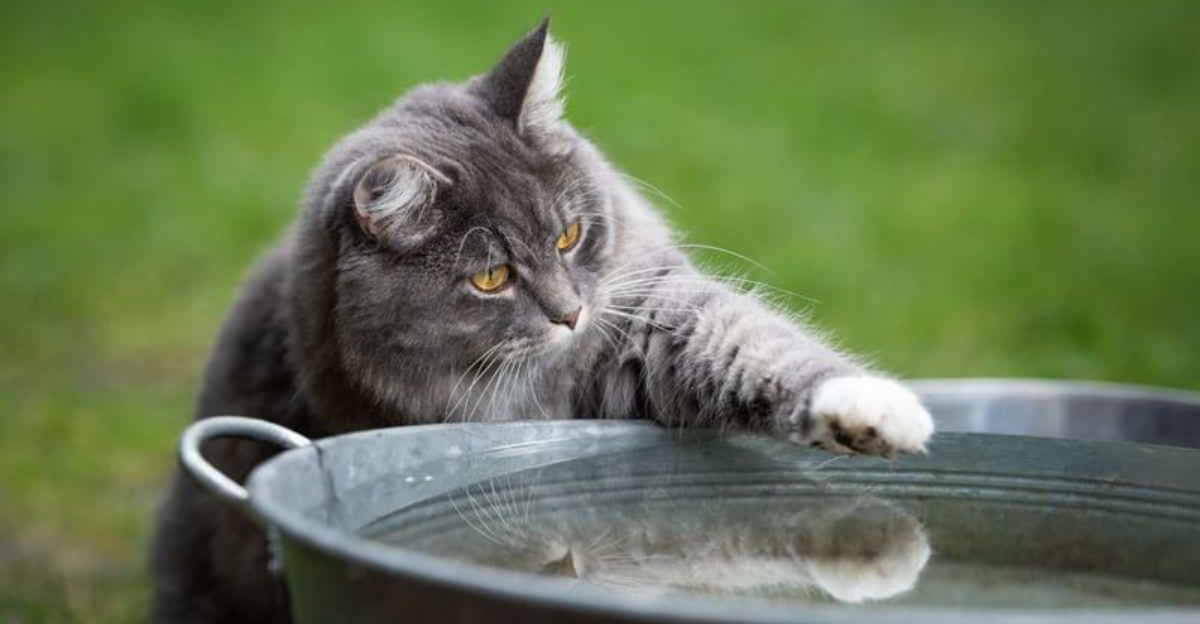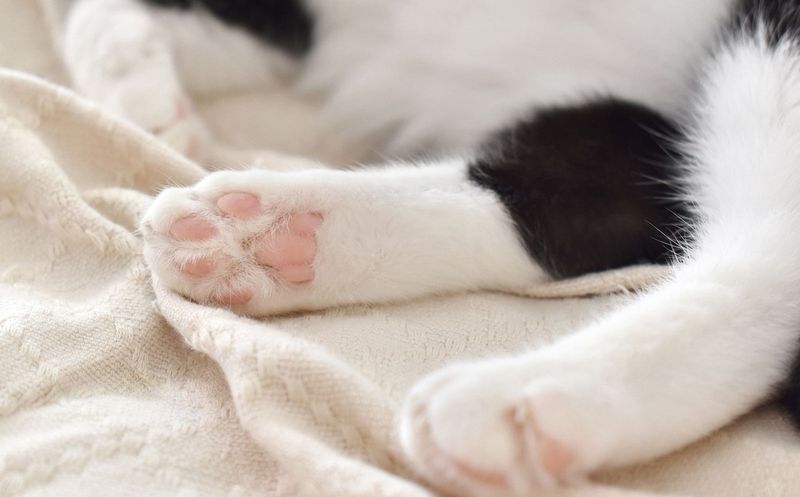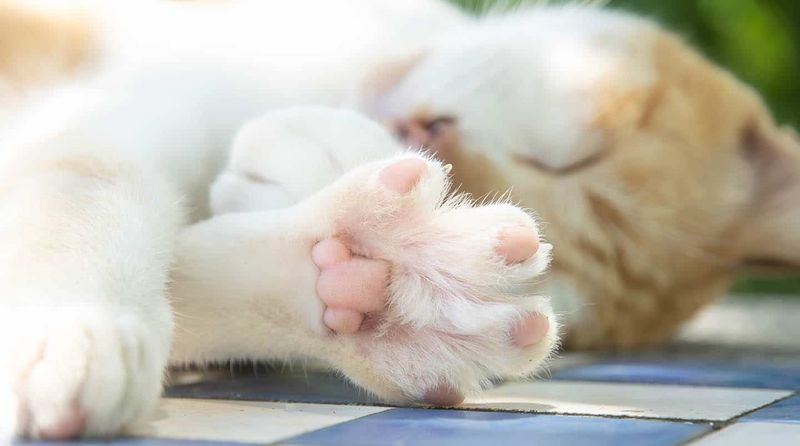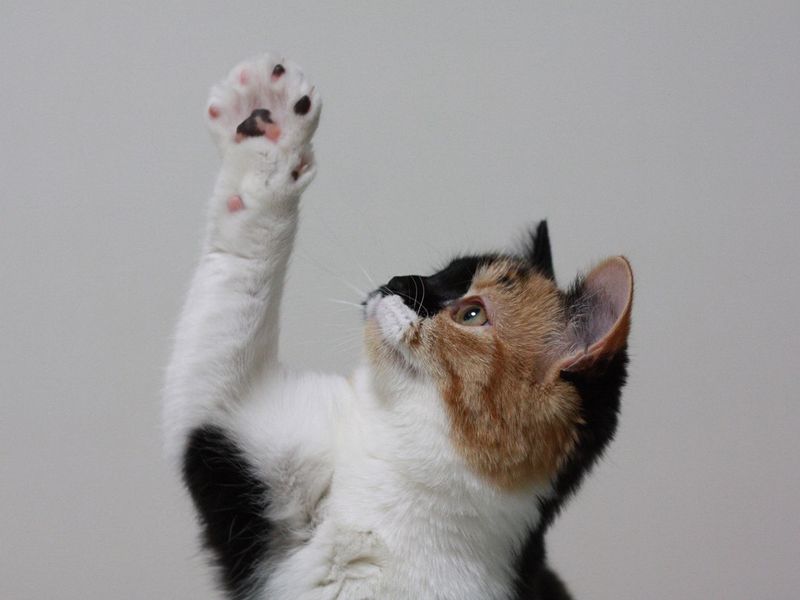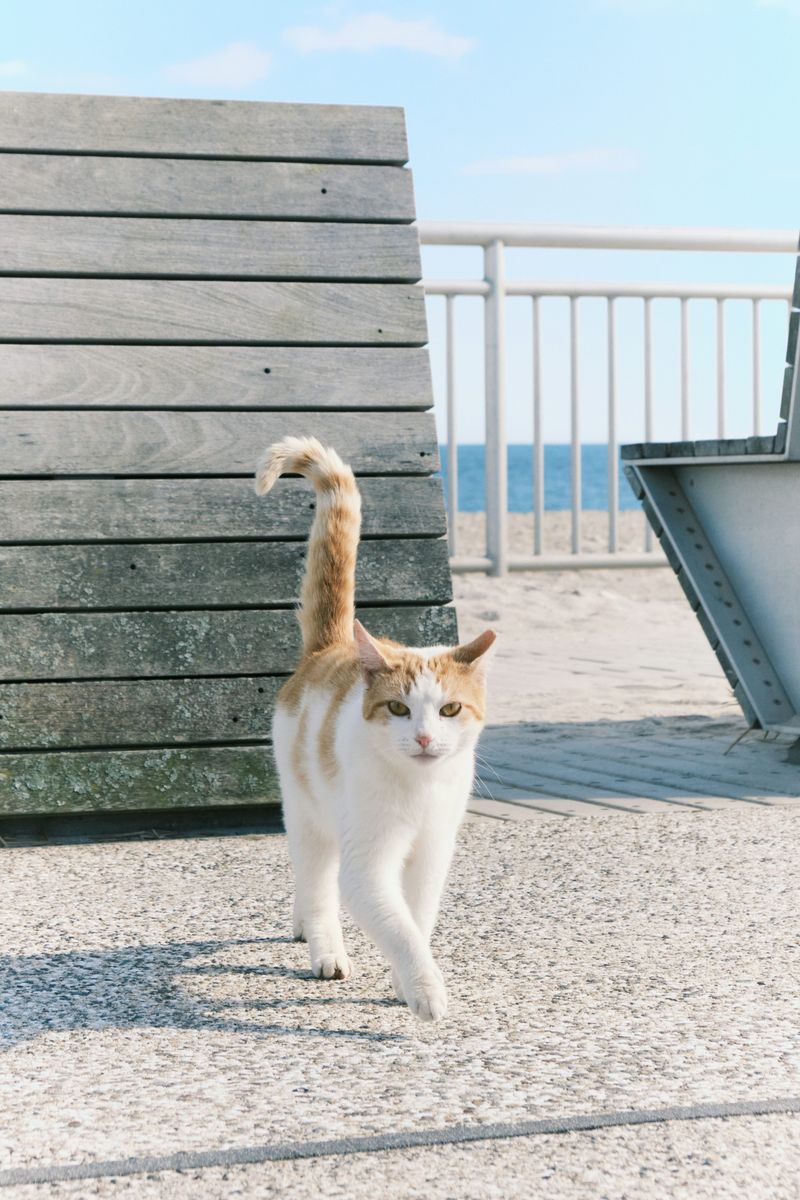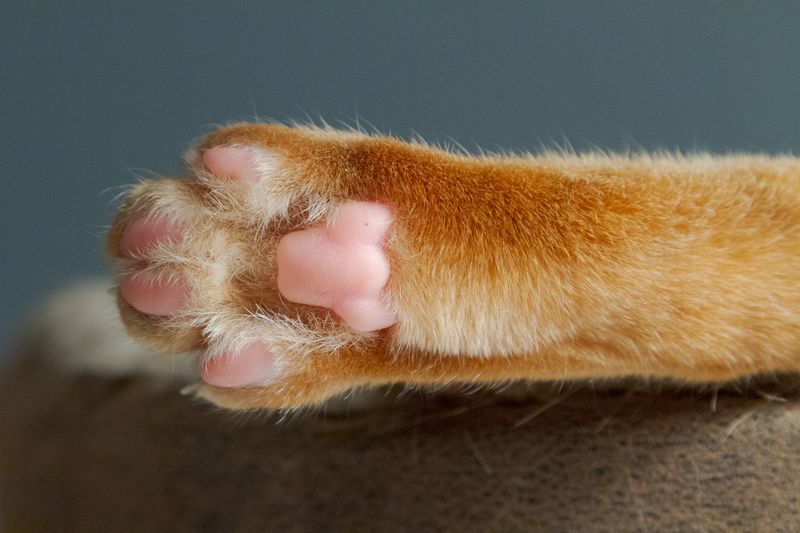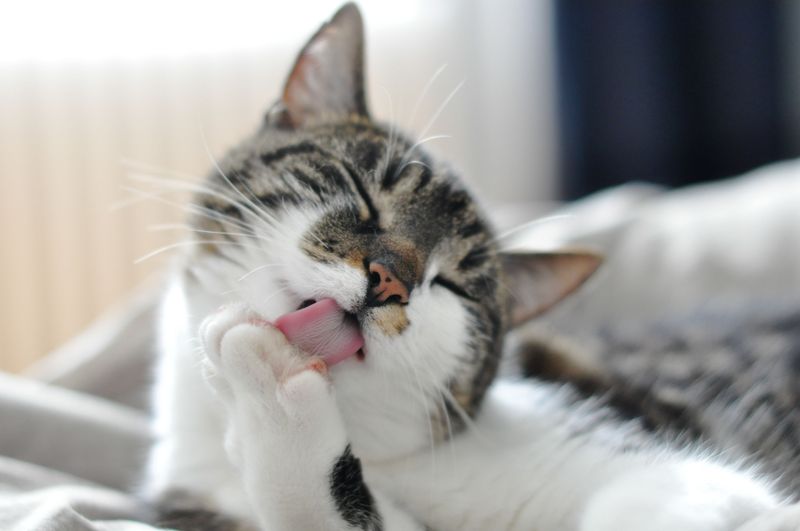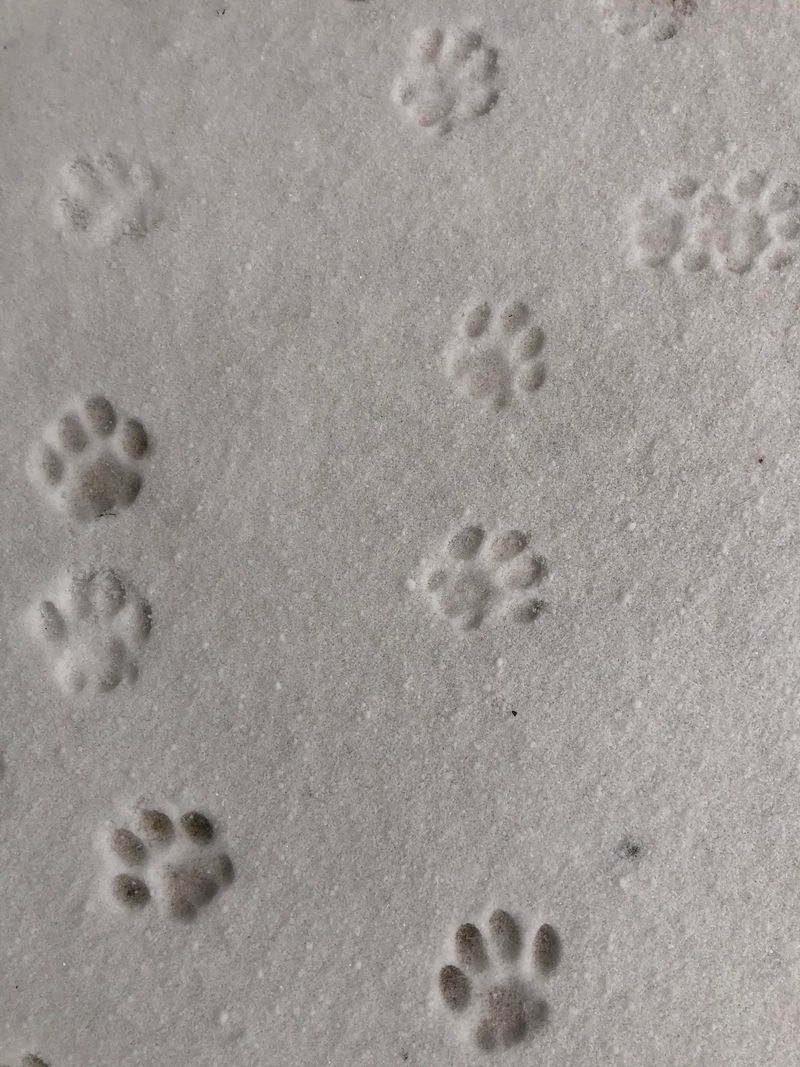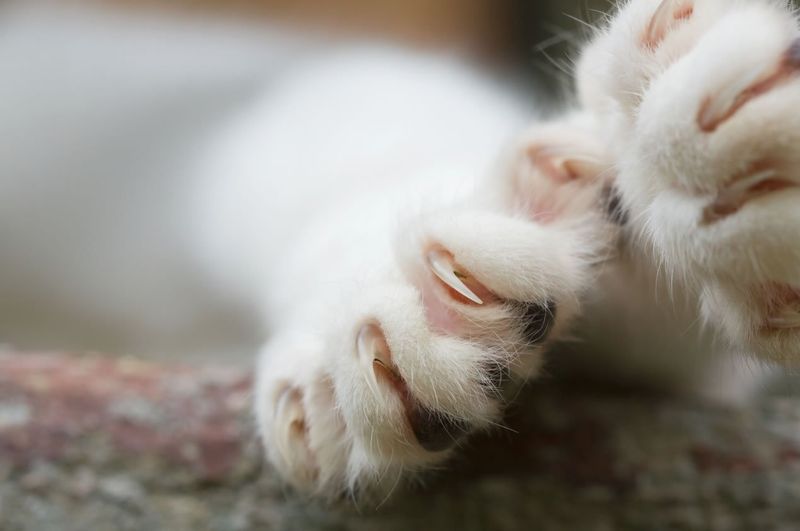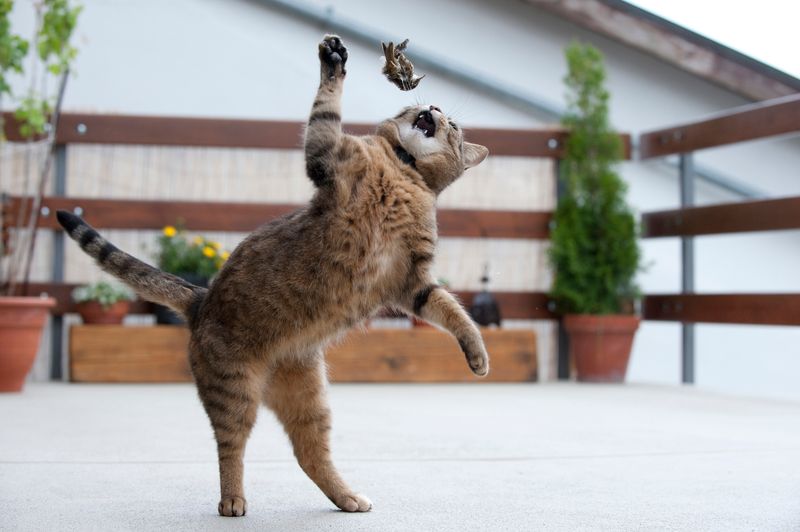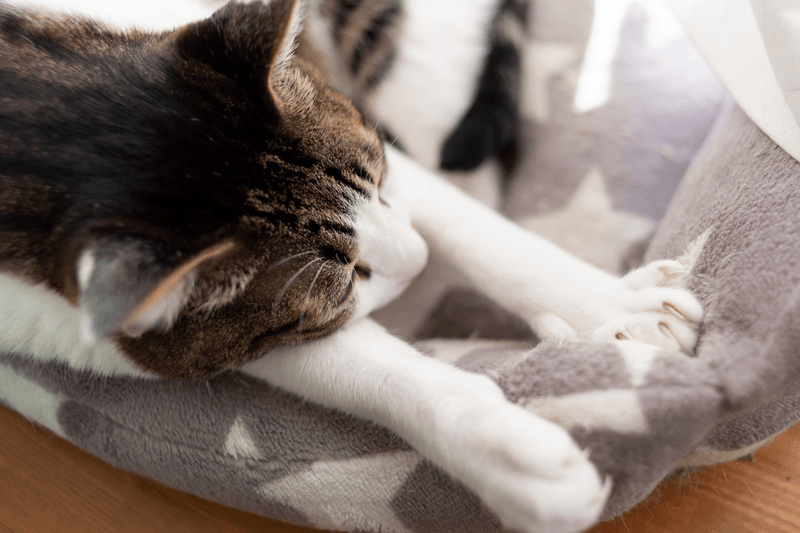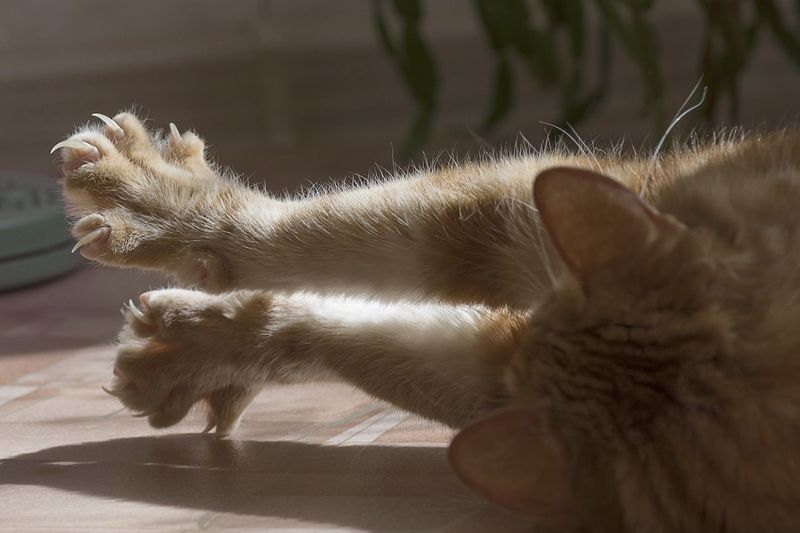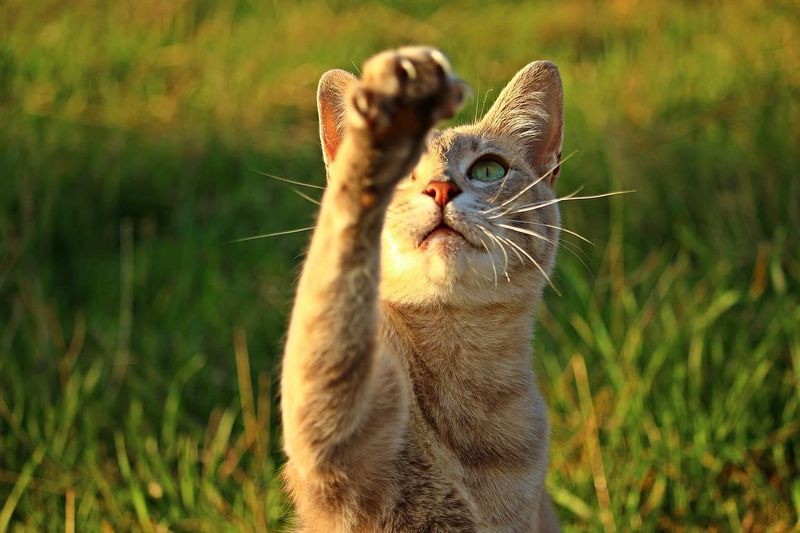📖 Table of Content:
- 1. Toe Beans Have Sweat Glands
- 2. They Work as Shock Absorbers
- 3. Paws Can Change Color
- 4. Cats Walk on Their Toes
- 5. Front and Back Paws Are Different
- 6. Paws Help With Grooming
- 7. Each Paw Has a Unique Print
- 8. Declawing Affects Paw Health
- 9. Paws Help with Hunting
- 10. They Have Built-in Thermometers
- 11. Kneading is a Comfort Behavior
- 12. Paws Can Indicate Mood
- 13. They Have Extra Sensory Nerves
- 14. Polydactyl Cats Have Extra Toes
- 15. Paws Need Regular Care
Cat paws are more than just adorable features—they are essential tools that contribute to a cat’s agility, balance, and overall well-being. These soft, padded structures act as natural shock absorbers, protecting a cat’s bones and joints during jumps and landings. Additionally, their paw pads contain sweat glands that help regulate body temperature and leave behind scent markings, reinforcing territorial boundaries. Each cat’s paw print is unique, much like a human fingerprint, adding to their individuality and charm.
Beyond their physical structure, cat paws play a key role in hunting and self-care. Their cushioned pads allow for silent stalking, making them efficient hunters in both the wild and at home. Paws also serve as grooming tools, helping cats clean themselves by transferring saliva to hard-to-reach areas. Kneading, a common behavior in cats, is another paw-related action linked to comfort and relaxation, often stemming from kittenhood. Interestingly, some cats have extra toes, a genetic trait known as polydactylism, which gives them an even more distinctive look.
Proper paw care is essential to a cat’s health and comfort. Regularly trimming claws prevents overgrowth, which can cause pain or difficulty walking. Checking paws for debris, injuries, or signs of infection ensures they remain in good condition. Since cat paws are highly sensitive, they can detect temperature changes and vibrations, helping them navigate their surroundings safely. Understanding these unique features allows cat owners to appreciate and better care for their feline companions, ensuring their paws remain healthy and functional.
1. Toe Beans Have Sweat Glands
Cats have a unique way to regulate their body temperature through their paw pads. These pads contain sweat glands, which help in cooling down when temperatures rise. While cats don’t sweat like humans, these glands play a crucial role during hot weather. If you ever notice your feline friend leaving tiny wet footprints, it’s a sign of their paws doing their job. Interestingly, these sweat glands also assist in marking territory. Cats release pheromones through their paws, leaving behind a scent trail that signifies ownership. Thus, cat paws are not just about adorability but also functionality.
2. They Work as Shock Absorbers
Paw pads are nature’s shock absorbers for cats. When a cat jumps down from high places, the pads cushion the impact, protecting bones and joints. This ability to absorb shock is vital for their agile lifestyle. Cats are known for their graceful landings, and it’s these pads that make it possible. By minimizing the impact, they prevent injuries, ensuring cats can continue to explore their environment freely. Additionally, the pads enhance grip, providing traction on slippery surfaces. This combination of cushioning and grip makes the paw pads an essential part of a cat’s anatomy.
3. Paws Can Change Color
The color of a cat’s paws can be quite a revelation. While some maintain a consistent color, others may darken over time due to genetics or aging. This change is usually harmless and doesn’t affect the cat’s health. However, it’s a fascinating aspect of feline biology. The pigmentation in the paws is determined by melanin, just like in a cat’s fur and skin. Owners may notice these changes as their cats grow older, adding to their unique character. Observing such transformations can be a delightful experience, reflecting the ever-evolving nature of our beloved pets.
4. Cats Walk on Their Toes
Unlike humans who are plantigrade, cats are digitigrade, meaning they walk on their toes. This anatomical structure gives them an edge in speed and stealth, crucial for hunting and evasion. Walking on their toes allows cats to move silently and swiftly, characteristics every feline possesses. This toe-walking aids in stalking prey, making them exceptional hunters. It’s also why cats can change direction quickly, enhancing their agility. The digitigrade posture contributes significantly to their iconic grace and poise, defining much of their movement behavior. Understanding this aspect can deepen our appreciation for these agile creatures.
5. Front and Back Paws Are Different
A cat’s front and back paws are not identical; they serve different purposes. Front paws are more dexterous, used for grasping and manipulating objects. They are pivotal in climbing and holding onto prey. In contrast, back paws provide strength and stability. They are the powerhouse behind a cat’s leaps and sprints. This division of labor between the front and back paws is a testament to the evolutionary adaptations of felines. By specializing in different functions, cats have developed a versatile means to interact with their environment. Such differences highlight the complexity of their anatomical design.
6. Paws Help With Grooming
Felines are meticulous groomers, and their paws play a crucial role in this daily ritual. Acting like washcloths, cats use their paws to clean areas that are hard to reach. They lick their paw pads, then wipe their face and ears, ensuring cleanliness. This behavior is not just about hygiene; it’s also soothing to them. Grooming helps cats relax and reduce stress. It’s fascinating to observe how they meticulously clean themselves, demonstrating the importance of their paws. By keeping themselves groomed, cats also maintain their fur in optimal condition, showcasing their self-care prowess.
7. Each Paw Has a Unique Print
Just like our fingerprints, each cat has a unique paw print. No two prints are alike, making them a fascinating aspect of feline individuality. These prints can be observed in soft soil or on surfaces where a cat walks. The unique patterns are formed by the ridges on their pads, similar to our fingerprints. While paw prints aren’t used for identification like fingerprints in humans, they are a charming reminder of each cat’s individuality. Noticing these prints can be an engaging activity, observing the silent trademarks left by our feline friends.
8. Declawing Affects Paw Health
Declawing is a controversial procedure that can have long-lasting effects on a cat’s paw health. It involves amputating the last bone of each toe, which can lead to chronic pain and balance issues. This procedure can significantly affect a cat’s natural behavior, as claws are essential for climbing and self-defense. Many veterinarians and animal rights advocates discourage declawing, promoting alternative methods like regular nail trimming or providing scratching posts. Understanding the implications of declawing is crucial for cat owners, ensuring the well-being and natural behavior of their pets. Prioritizing paw health leads to happier, healthier cats.
9. Paws Help with Hunting
The soft, cushioned pads enable them to walk silently, giving them a crucial advantage when stalking prey. This quiet approach is further enhanced by their retractable claws, which remain hidden until needed for a swift, precise attack. These adaptations make cats exceptional hunters, whether in the wild or at home. The ability to move without making a sound is not solely for survival—it also plays a role in their everyday behaviors. Watching a cat carefully creep forward before pouncing provides a glimpse into the finely tuned mechanics of their movements. Beyond hunting and play, cat paws serve multiple functions in their daily lives. They assist with balance, provide traction, and even help in grooming by transferring saliva for cleaning.
10. They Have Built-in Thermometers
The sensitivity of a cat’s paws extends to temperature changes, acting as built-in thermometers. Paw pads can detect hot or cold surfaces, allowing cats to avoid discomfort or potential harm. This sensory ability helps them navigate different environments safely, ensuring their paws remain unscathed. For instance, during extreme temperatures, a cat will avoid walking on surfaces that could burn or freeze its pads. This adaptive trait showcases the evolutionary design of feline paws, prioritizing safety and comfort. By understanding their sensitivity, owners can ensure their cats’ paws are protected from harsh conditions.
11. Kneading is a Comfort Behavior
A common behavior observed in cats involves them rhythmically pushing their paws against soft surfaces. This action is linked to comfort and security, often displayed when they are relaxed. Kneading is thought to originate from kittenhood, where kittens knead their mother’s belly to stimulate milk flow. In adulthood, it persists as a comforting ritual. Cats may also knead to mark territory, using scent glands in their paws. Observing a cat knead is endearing, showing a glimpse into their content and secure states. Providing soft blankets can encourage this natural behavior, enhancing their comfort at home.
12. Paws Can Indicate Mood
When feeling anxious or threatened, a cat may extend its claws as a sign of readiness to defend itself. In contrast, relaxed cats often keep their claws retracted, signaling comfort and ease. This subtle but important aspect of feline body language helps owners interpret their pet’s feelings more accurately. Claw positioning serves as a key part of a cat’s non-verbal communication. By observing whether their claws are extended or tucked away, owners can gauge their cat’s mood and respond appropriately. A cat with retracted claws is likely feeling at peace, while one with extended claws may need space or reassurance. Understanding these signals allows for better interactions that respect the cat’s emotional state.
13. They Have Extra Sensory Nerves
The paw pads of cats are densely packed with sensory nerves, making them highly sensitive to touch and vibrations. This sensitivity is crucial for their interaction with the environment. Cats can detect subtle changes in surface textures and vibrations, aiding in navigation and hunting. This heightened sense allows them to assess their surroundings effectively. For instance, when a cat encounters an unfamiliar surface, it uses its paws to explore cautiously. Understanding this sensitivity can help owners create a safer environment, avoiding irritants that might cause discomfort. This tactile awareness is a testament to the intricate design of feline anatomy.
14. Polydactyl Cats Have Extra Toes
Known for having extra toes, these cats are a unique and charming variation among their species. This genetic trait can give them a mitten-like appearance, with some cats having six or more toes on each paw. These extra digits can enhance their dexterity, offering advantages in climbing and grasping objects. While it doesn’t significantly affect their health, the uniqueness adds character to these cats. Polydactyl cats have been popularized by notable figures, including author Ernest Hemingway, who kept several of them. Observing a polydactyl cat can be an endearing experience, showcasing the diversity within the feline world.
15. Paws Need Regular Care
Caring for a cat’s paws is essential to prevent injuries and maintain overall health. Regular claw trimming is recommended to avoid overgrowth, which can lead to discomfort. Checking for debris and foreign objects between the pads is also important, as they can cause irritation or injury. Providing scratching posts can assist in natural claw maintenance, allowing cats to shed the outer layers of their claws. By prioritizing paw care, owners contribute to their cat’s well-being, ensuring they remain active and pain-free. These proactive measures foster a healthier and more comfortable lifestyle for feline companions.
